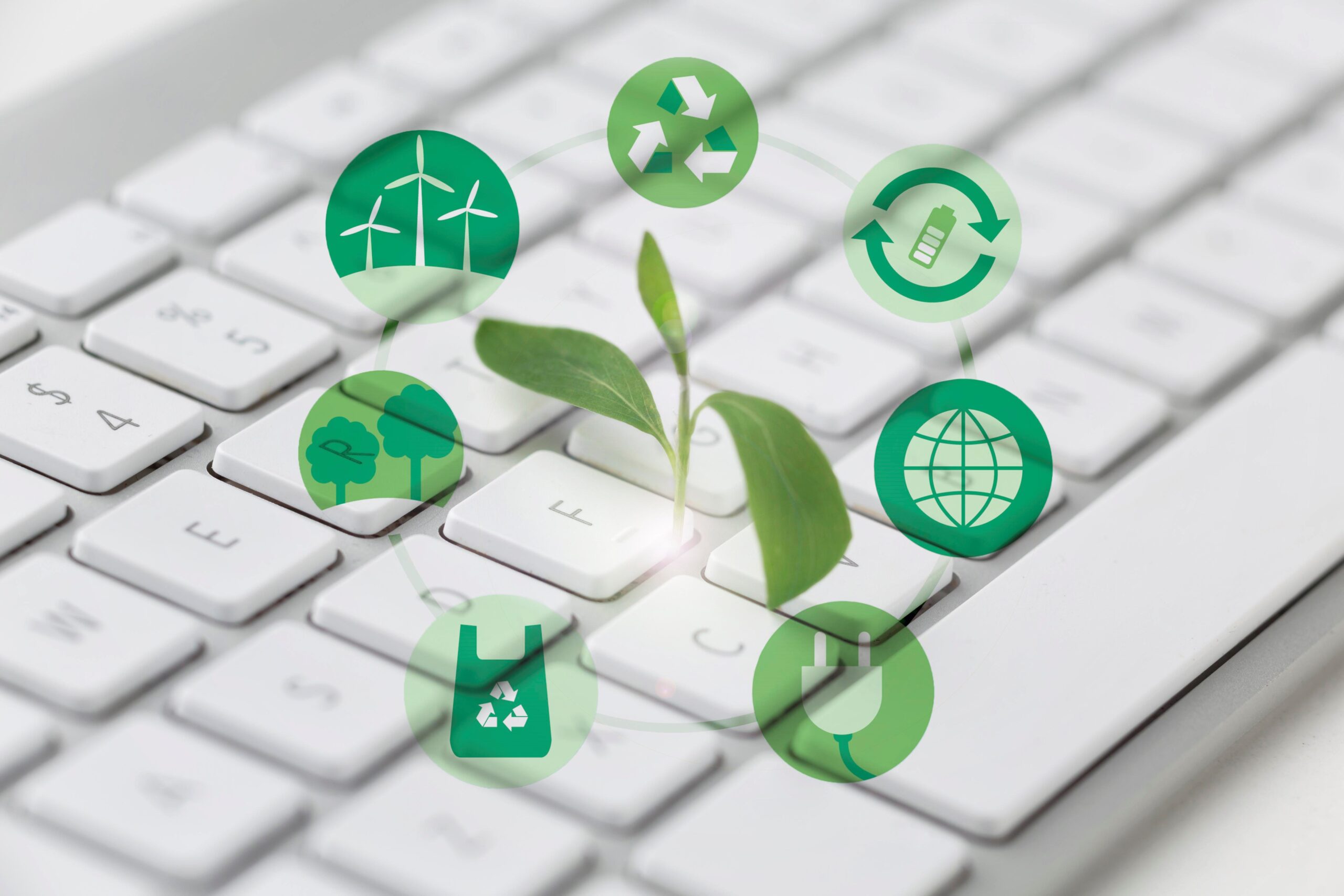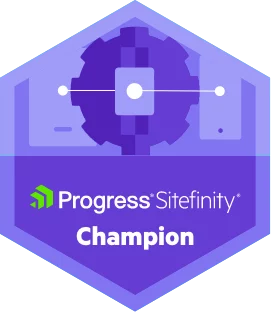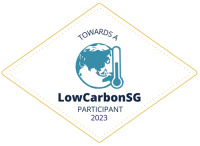In an era where energy and resource conservation is important, it’s crucial to consider adopting sustainable web development practices.
Sustainability is becoming an increasingly important aspect of web development as we tackle climate issues around the world.
The global COVID-19 restrictions led to a significant reliance on digital technology such as video calls, emails, and instant messaging in 2020.
For instance, a report by the market research company, Radicati Group, found that the number of business and consumer emails sent and received per day was expected to reach 347 billion in 2020, an increase of 4% from the previous year.
It’s forecast to grow to over 4.3 billion by year-end 2023.
The Global e-Sustainability Initiative (GeSI) estimates that the ICT sector, including the internet, was responsible for 4% of global carbon emissions1 in 2020, which is equivalent to the emissions produced by the aviation industry.
Online activity is set to continue to rise post-pandemic with increasing usage of digital services on top of embracing digital transformation.
The call for green sustainable practices is even more urgent now than before in the tech industry. A greener future depends on the sources of energy used and how companies design their products to be more sustainable and eco-friendlier.
Adopting sustainable practices in web development means implementing principles and standards that minimise the environmental impact of websites and applications, conserving energy, using resources efficiently, and improving performance and user experience.
In this article, we’ll explore the top seven sustainable web development practices that developers and tech professionals should consider adopting to create more efficient and eco-friendly websites. These practices range from using efficient coding techniques to implementing green hosting solutions.
Before that, let’s consider the reasons why it’s important to adopt sustainable web development practices when working on your websites.
Why Adopt Sustainable Web Development Practices
In Singapore, the government announced the Singapore Green Plan 2030, or SG Green Plan, as a nationwide movement to advance the country’s national agenda on sustainable development.
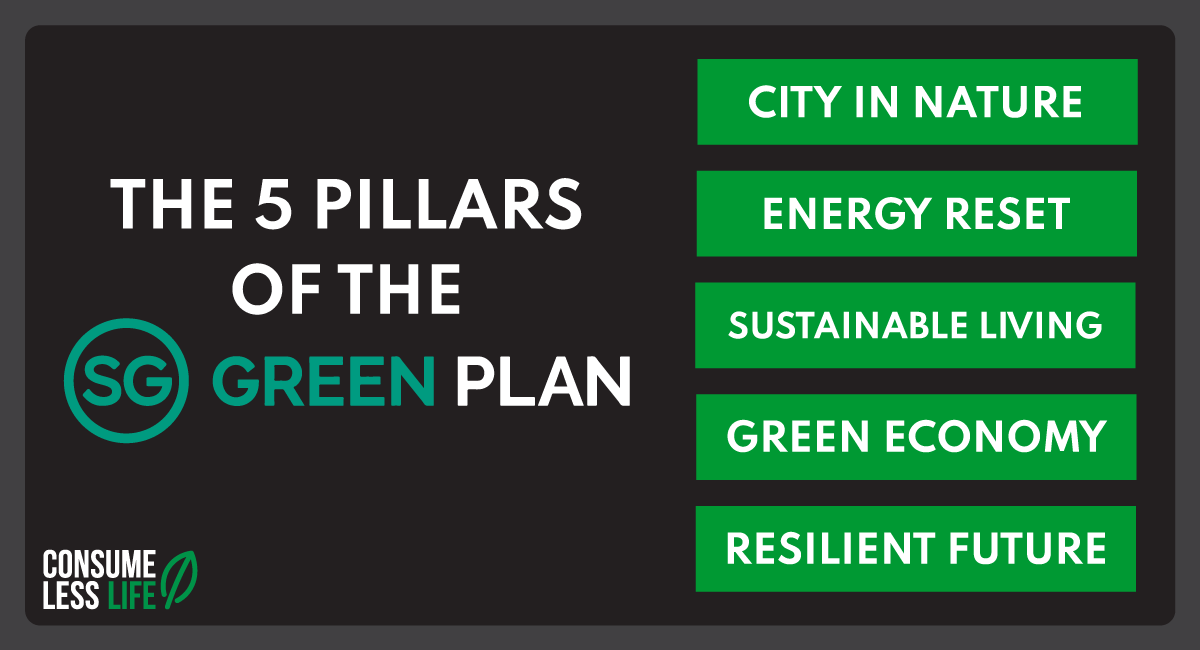
Source: Consume Less Life
The Green Plan aims to strengthen Singapore’s commitments under the UN’s 2030 Sustainable Development Agenda and Paris Agreement and achieve a long-term net zero emissions aspiration by 2050.
To align with this goal, web developers and designers must adopt sustainable practices to cut carbon emissions.
Below are several other reasons why it’s important to adopt sustainable practices.
1. Performance
Performance is a key aspect of web development.
Users expect websites and applications to load quickly and function smoothly.
Adopting sustainable practices such as eliminating unnecessary code or compressing images can improve performance.
2. Cost Savings
Implementing sustainable practices can lead to cost savings in the long run in aspects like scalability, energy costs, hardware costs, bandwidth and storage costs, and maintenance costs.
(i) Energy costs
Sustainable hosting solutions such as green hosting providers use servers that utilise less energy and hence reduce energy costs.
Green hosting providers may also use renewable energy sources to power their infrastructure, giving clients carbon emission savings in their upstream emissions.
(ii) Hardware costs
The size of a website can be reduced by using efficient coding techniques. Less hardware is required to run the website or application, leading to cost savings.
(iii) Scalability
By using sustainable practices, such as cloud computing, websites, and applications can be more easily scaled up or down as needed, leading to cost savings.
(iv) Bandwidth and storage costs
By using optimised images and efficient coding techniques, the size of a website or application can be reduced, leading to cost savings on bandwidth and storage, as fewer data needs to be transferred and stored.
(v) Maintenance costs
By using modern web development techniques and technologies, websites, and applications can be easier to maintain and update.
This can lead to cost savings, as less time and resources are required to maintain the website or application.
3. Business Advantage
According to the 2017 Cone Communications Global CSR Study, 84% of global consumers seek out companies with positive sustainability commitments to do business with.
Companies that adopt sustainable practices can enjoy several business advantages.
(i) Differentiation
Companies can stand out in the marketplace and differentiate themselves from competitors by implementing sustainable practices in web development.
(ii) Reputation
Companies can attract environmentally conscious customers and build a positive reputation with them by adopting sustainable practices.
(iii) Brand Image
Adopting sustainable practices helps companies enhance their brand image and reputation by showcasing their commitment to sustainability.
This also attracts environmentally conscious consumers and builds trust and loyalty with existing customers.
4. Social Responsibility
Companies that adopt sustainable web development practices can fulfill their social responsibility towards the environment in the following ways.

(i) Promoting Sustainability
Companies can set good examples and promote sustainability to others by adopting these practices.
They can become pillars in their respective industries to inspire other companies and individuals to adopt sustainable practices and contribute to a more sustainable future.
(ii) Reducing Carbon Footprint
Companies adopting sustainability in their practices reduce the carbon footprint and therefore reduce the environmental impact of their websites and applications.
(iii) Improving Society
In the process of adopting sustainability practices, companies help conserve resources and reduce pollution by creating more eco-friendly internet.
This benefits society.
(iv) Being a Responsible Corporate Citizen
Companies have the responsibility of being good corporate citizens and should be responsible for the impact of their business operations on the environment and society.
Implementing sustainable practices is one way to fulfill this responsibility.
(v) Meeting Expectations of Society
To achieve the national and global goals of sustainability, as well as meet societal expectations, companies eventually will be held accountable for their environmental impact.
Adopting sustainable practices can help businesses meet expectations and avoid criticism.
Sustainable Web Development Practices To Adopt
Here are the best web development practices to adopt to achieve sustainability goals of reduced greenhouse gas emissions.
1. Optimise Website Performance
Optimise website performance to reduce load times and energy consumption.
Here are some ways to reduce load times.
(i) Optimise images
This involves compressing images, so they take up lesser space and load faster. This can be done using tools like Photoshop or TinyPNG.
High-powered consumption elements like videos can also be optimised by using methods such as data compression tools.
Optimise code through minification so that it runs more efficiently.
(ii) Use a Content Delivery Network (CDN)
A Content Delivery Network (CDN) helps reduce website load times by distributing the content across several servers in different locations so that it’s delivered to the user from the server closest to their location.
This also helps reduce energy consumption as the website loads faster.
CDN is the next sustainable web development approach that we’re going to take a closer look at.
2. Use a Content Delivery Network (CDN)
Using a Content Delivery Network (CDN) can reduce the carbon footprint of data centers.
A CDN is a distributed network of servers located in various locations around the world. These servers store and deliver content to users based on their geographical location.
Instead of having all traffic directed to a single data center, a CDN directs traffic to the server closest to the user. This reduces the amount of distance the data has to travel and thus the amount of energy required to transmit it.

Photo by Jack Moreh from Freerange Stock
Therefore the amount of energy required to cool the data centers is also reduced.
CDNs help reduce the carbon footprint of data centers by offloading some of the traffic and reducing the distance that data has to travel. Overall, this reduces the energy consumption of the data centers.
3. Use a Green Web Hosting Provider that Uses Renewable Energy Sources
A green web hosting provider uses renewable energy from sources such as solar, wind, and hydropower to run data centers. This helps reduce the number of greenhouse gases released into the atmosphere.
Using a green web hosting provider helps offset a website’s carbon footprint. For businesses that have a huge online presence, this can be very beneficial since these websites can consume significant amounts of energy.
Using green web hosting services can thus offset some of the carbon emissions associated with the website’s energy consumption.
As more businesses start to adopt sustainability practices to reduce their carbon footprint, it can help create demand for renewable energy sources and encourage organisations to invest in them.
If you’re looking for a green hosting provider, consider the latest product in the market, WebAble Host.
WebAble Host runs on the Amazon Web Services (AWS) green infrastructure that is environmentally friendly and secure. The technology is both serverless and containerised which contributes to cost savings and more efficient use of resources.
WebAble Host also helps clients reduce their site hosting upstream carbon emissions by 71.43%. *
* This figure is calculated based on the AWS carbon footprint tool and compared with regular two-processor servers (enterprises and data centers) that do not use renewable energy sources.
AWS currently reduces 0.1 metric Tonne (mT) of carbon using two solar farms in Singapore and the annual emissions of two-processor servers are 0.14 mT.
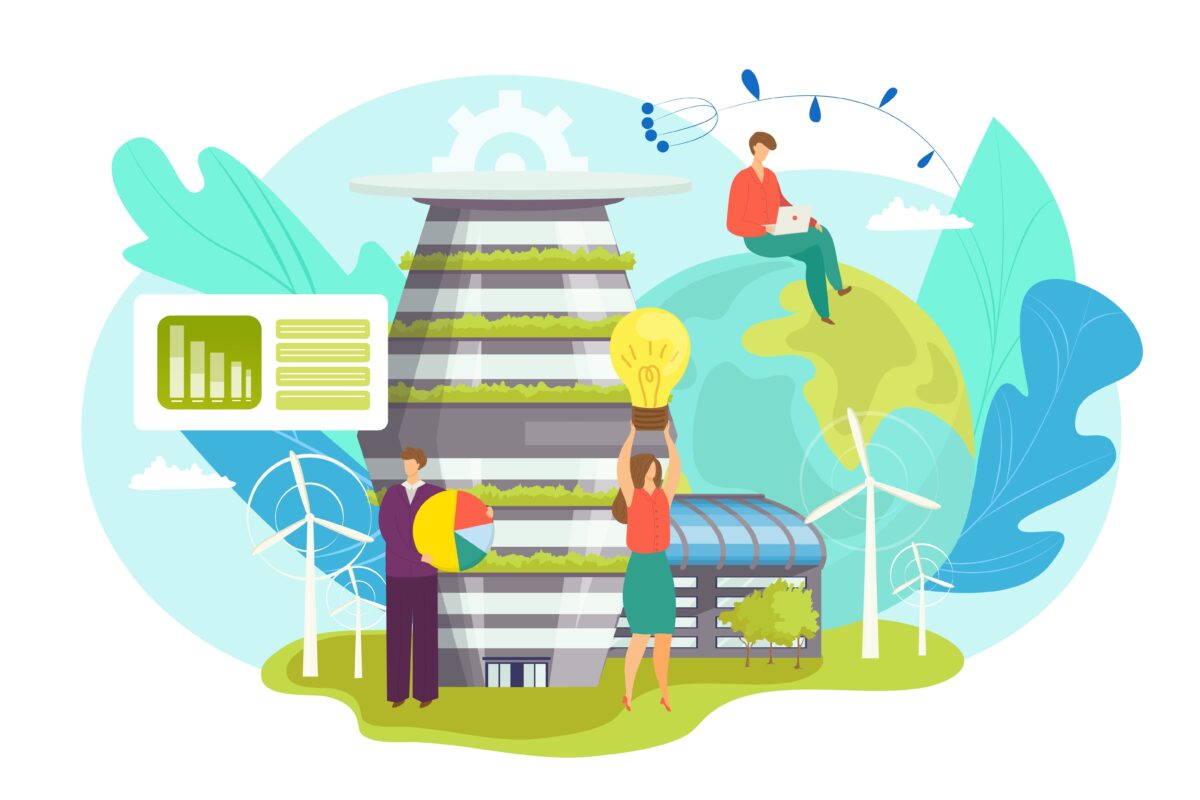
4. Use a sustainable website design and development approach
One such sustainable website design approach to reduce the environmental impact of a website is to use minimalistic design.
The minimalistic design emphasises simplicity and functionality over excessive elements and features.
Let’s take a look at how minimalistic design can be sustainable in a few ways.
(i) Reduction in data loaded
Minimalistic design reduces the amount of data that needs to be loaded on the website.
This helps reduce the energy consumption of servers and users’ devices which benefits users who have slower internet connections and websites with high traffic.
(ii) Reduction in coding
Minimalistic design reduces the amount of code required to create websites.
This helps reduce the energy consumption of the development process and decrease the carbon footprint of the website.
(iii) Reduction in visual noise
Minimalistic design reduces the amount of visual noise.
This improves user experience and reduces the cognitive load on users and makes the website more accessible for users who are visually impaired.
(iv) Creates a more sustainable visual aesthetic
Minimalistic design creates a more sustainable visual aesthetic that can be easily updated and maintained.
This helps to reduce the environmental impact of redesigning and updating a website as it requires fewer resources to make changes.
5. Use CSS (cascading style sheet) preprocessors and frameworks
Tools such as CSS (cascading style sheet) preprocessors and frameworks can help to reduce the amount of code required to style and layout a website.
CSS preprocessors, such as Sass and Less, allow developers to use variables, functions, and nested rules in their CSS code, which can help to make it more organized and maintainable. This helps to reduce the amount of code that is required, as common styles and layouts can be defined once and reused throughout the website.
CSS frameworks, such as Bootstrap and Foundation, provide pre-written CSS and JavaScript code that can be used to create common web page elements, such as forms, buttons, and navigation menus.
These frameworks can help reduce the amount of code required to create a website, as developers do not have to start from scratch for every page.
6. Minimise the use of images and other resources
Using fewer images and other resources on a website makes it more sustainable by reducing the overall size of the website which can lead to faster load times for visitors, as well as reducing the environmental impact of the website.
Images and other resource files require energy to create, transmit and take up space on servers, which can contribute to the carbon footprint of a website.
To minimise the use of images and other resources, designers, and developers can use the following strategies.
(i) Use vector graphics instead of raster images

Source: Wikipedia
Vector graphics are smaller in size and can be easily scaled without losing quality compared to raster images. This can help to reduce the overall number of images that need to be used.
(ii) Optimise images
Optimise images by reducing size while maintaining quality.
(iii) Use cascading style sheets (CSS)
Cascading style sheets (CSS) separate the presentation of a website from its content. This reduces the size of the HTML document which can lead to faster load times and improved performance.
(iv) Use text or HTML5 videos instead of images
This can help to reduce the number of resource files that need to be loaded, and it can also make the website more accessible for users with visual impairments.
(v) Use caching, compression, and minification techniques
These techniques reduce the overall size and number of resources that need to be loaded.
7. Use Open Source Web Development Tools

Using open-source web development tools can help reduce software development’s carbon footprint in several ways.
Some of the popular tools include WordPress, Bootstrap, and Visual Studio Code.
(i) Open-source tools are often available for free
This means there’s no need to purchase them or use energy to produce them.
(ii) Open-source tools are often developed and maintained by a community of users
There’s no need for a single company or organization to devote resources to their development and maintenance.
In a large community of users, bugs are found and fixed quickly, and new features are added at a faster pace.
This reduces the need for developers to spend time and energy on developing their tools or customizing proprietary tools.
(iii) Open-source tools are also often more transparent and customizable than proprietary tools
Developers can easily view and modify the underlying code with open-source tools. This can help to make the tools more efficient and reduce the overall energy consumption associated with software development.
(iv) Open-source tools allow for easier collaboration and sharing of resources among developers
Collaboration and sharing of resources among the community can help reduce the overall energy consumption associated with software development.
Conclusion
The above practices may be combined to achieve better optimisation. Adopting sustainable web development practices is becoming increasingly important as the world becomes more conscious of the environmental impact of technology.
Not only are the benefits of adopting sustainable practices for web development eco-friendly, but they also improve user experience by making websites faster, more accessible, and more efficient online presence.
It’s important to note that sustainable web development is a continuous process and new strategies and technologies are being developed constantly.
Therefore, developers should keep themselves updated with the latest trends and best practices.
1 Note that the exact figures can vary depending on the sources and methodologies used to estimate the carbon footprint of the internet. They can also vary depending on factors such as the energy mix used to power data centers, the efficiency of the infrastructure, and the adoption of sustainable practices.
Websparks is a Web Development Company
Websparks is a web development company based in Singapore that offers digital services for our clients.
At Websparks, we are committed to exercising sustainable practices that include green coding, promoting renewable energy, and reducing e-waste.
Be it in web development, web design, or applications, we are constantly working towards providing innovative solutions that reduce our environmental impact and carbon emissions.
Check out our services.
Consult us today on how we can help you achieve your goals for your digital projects.

